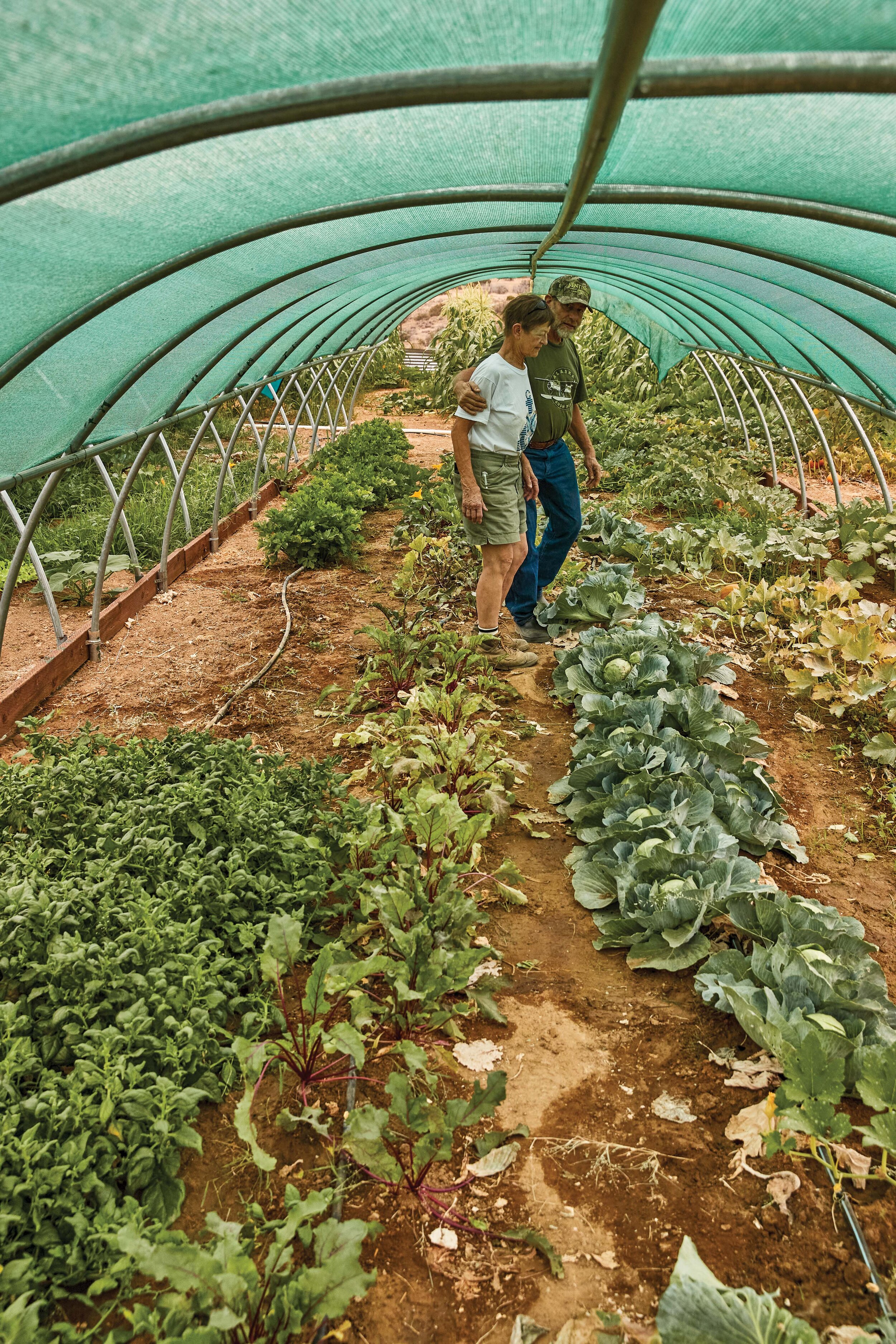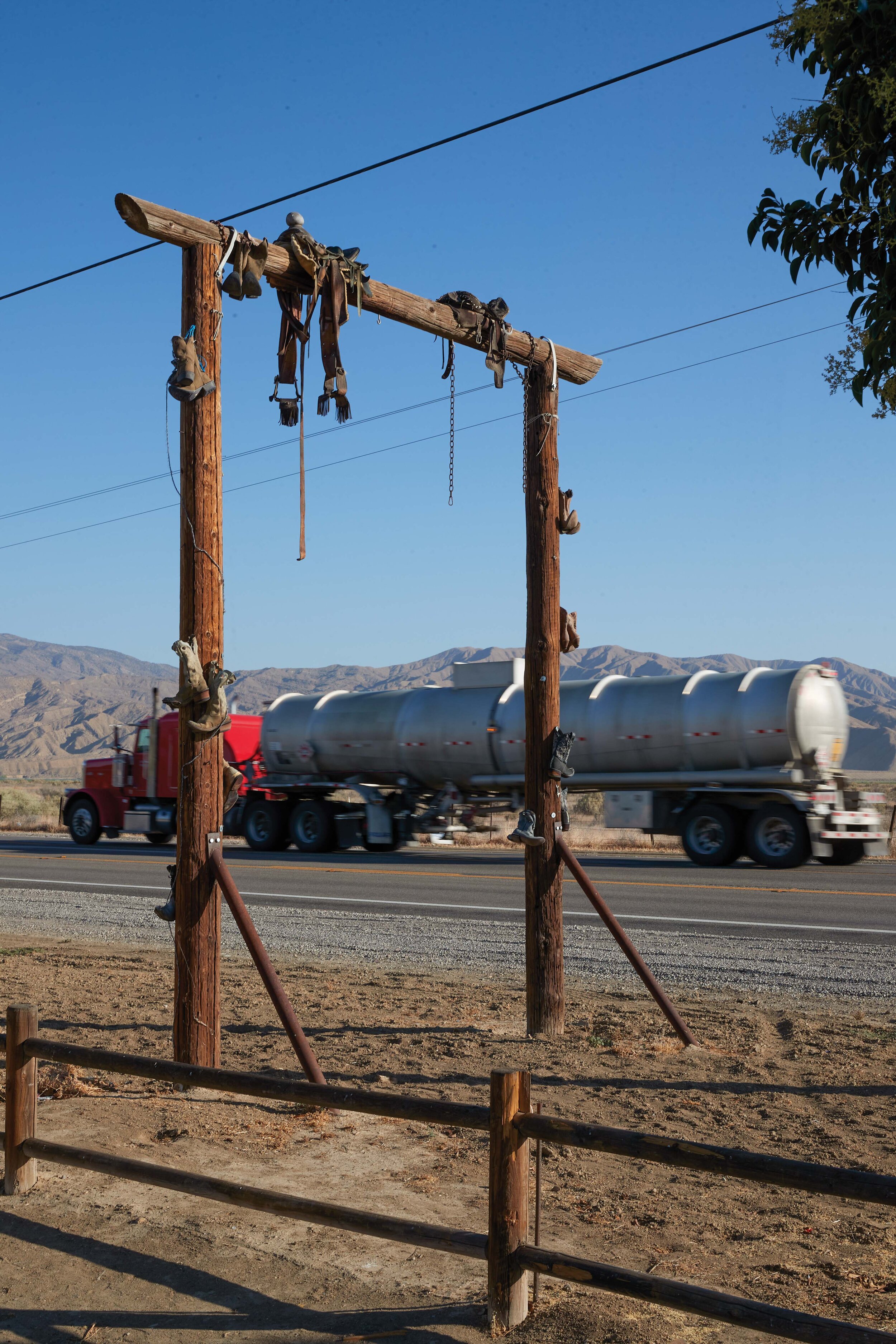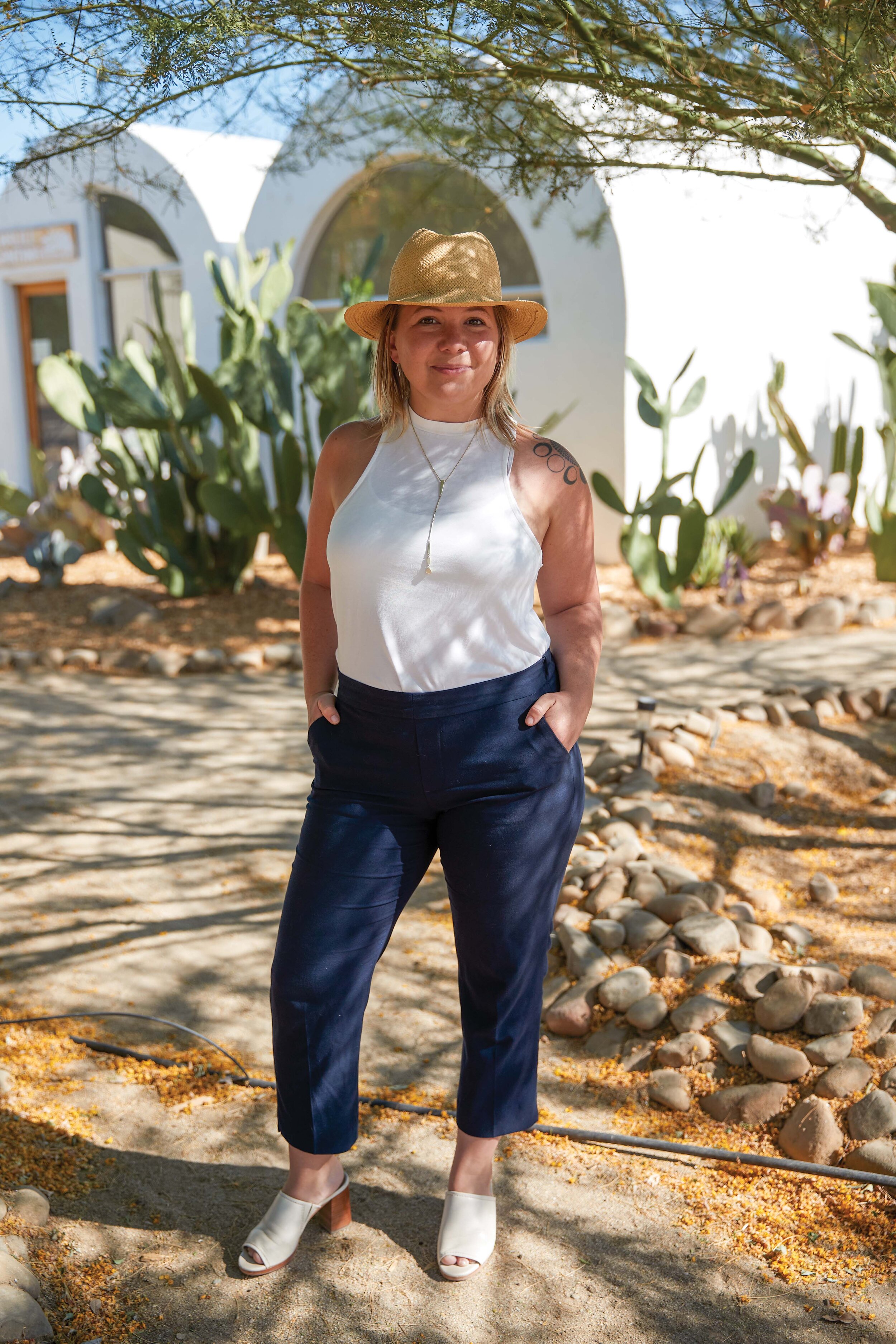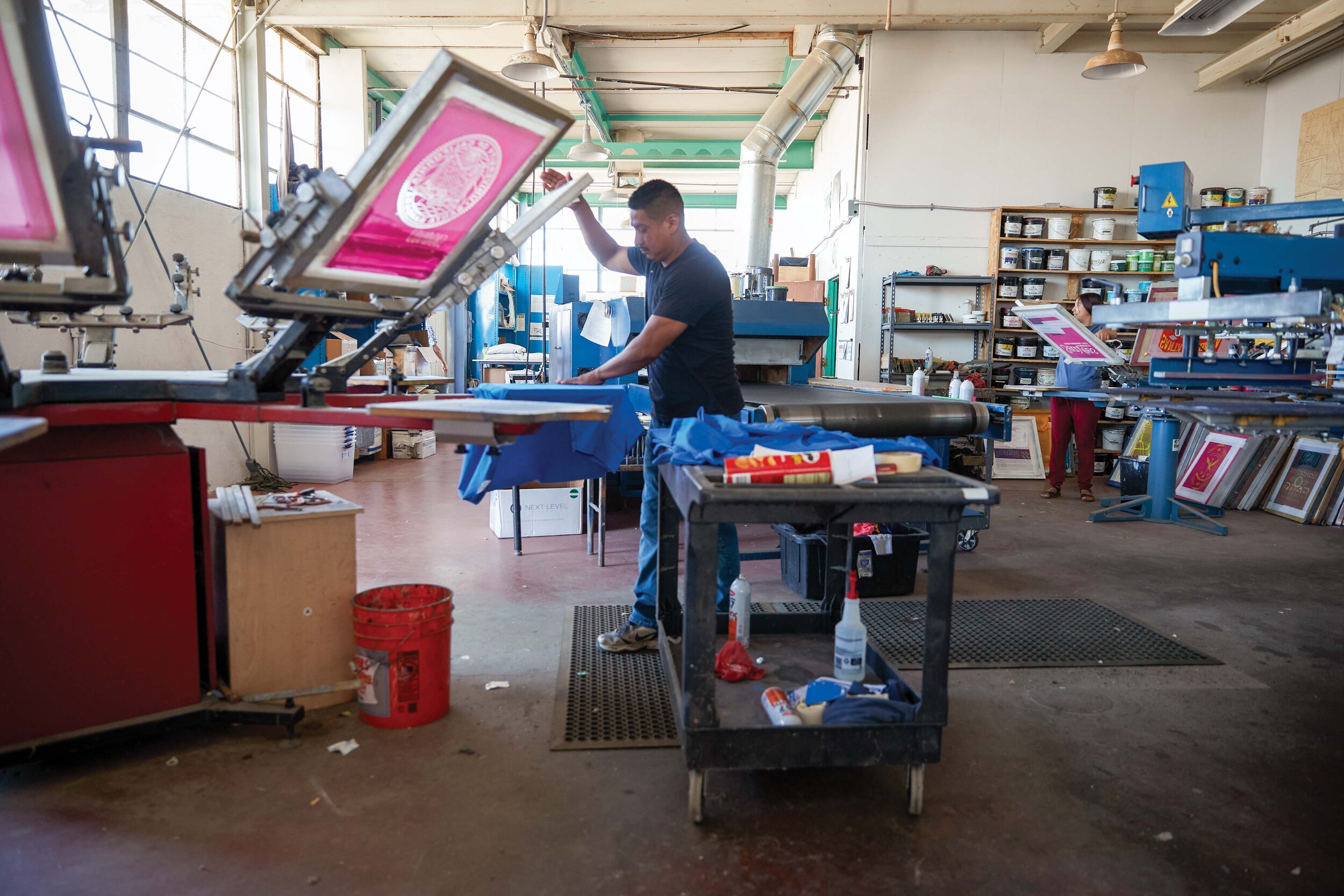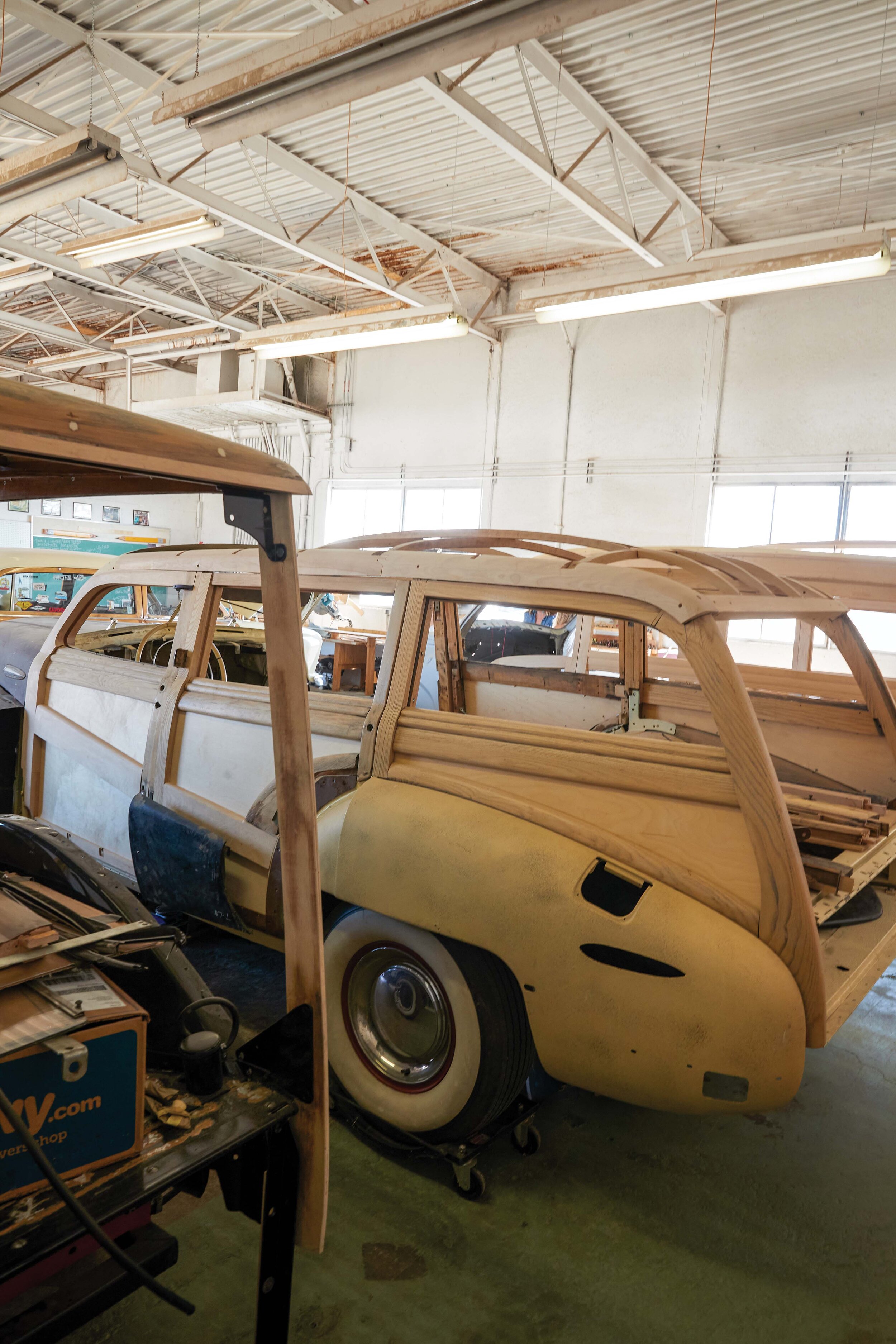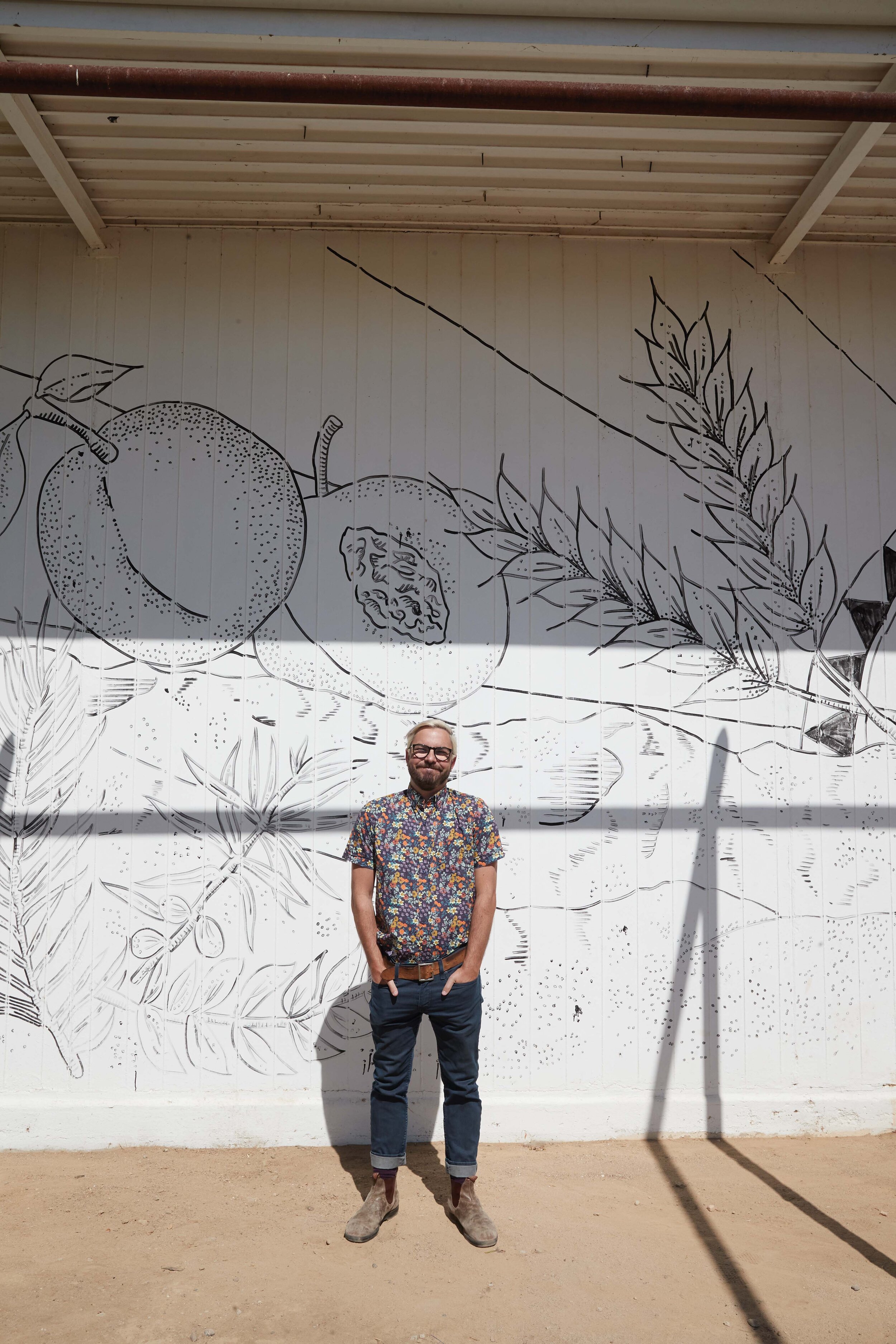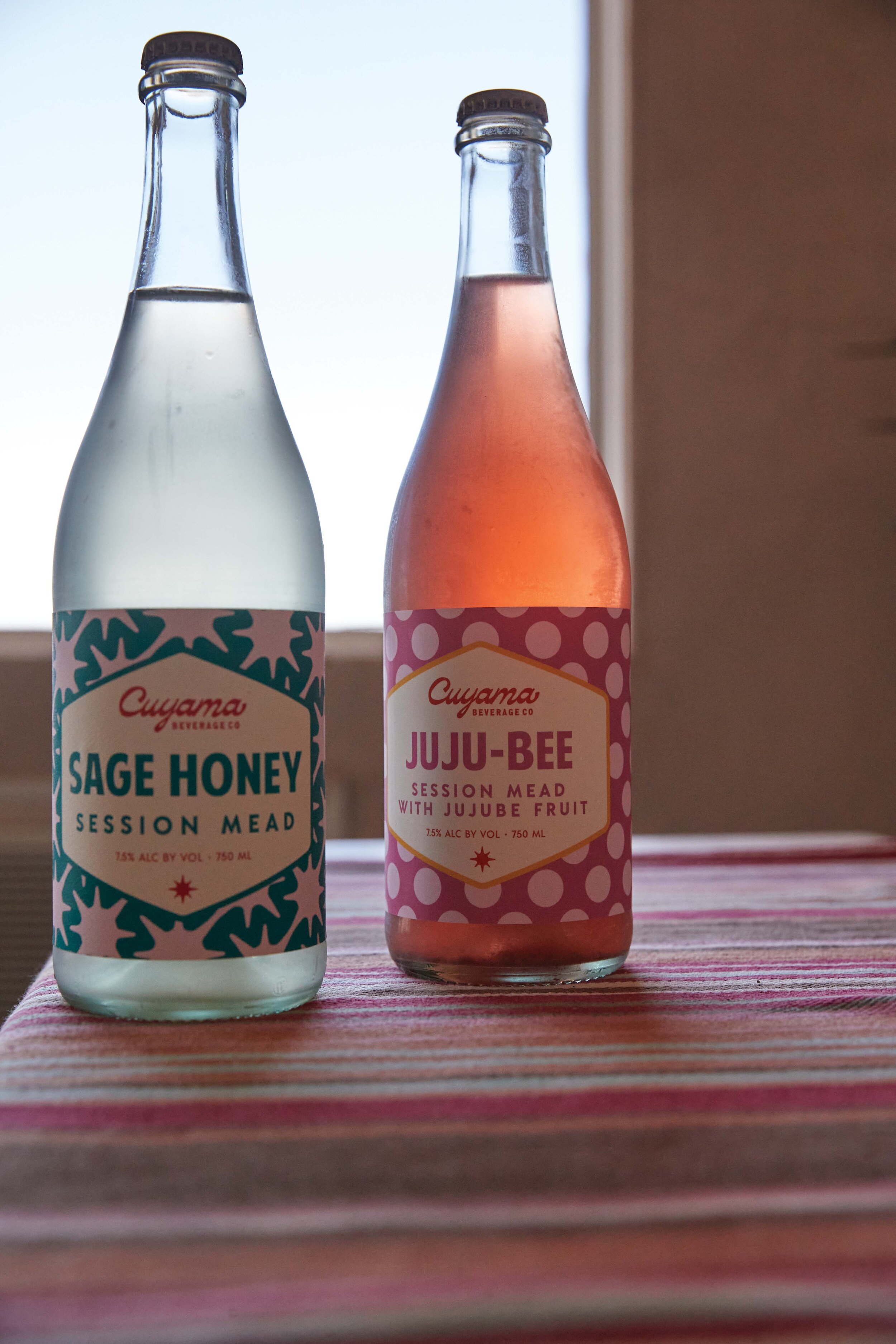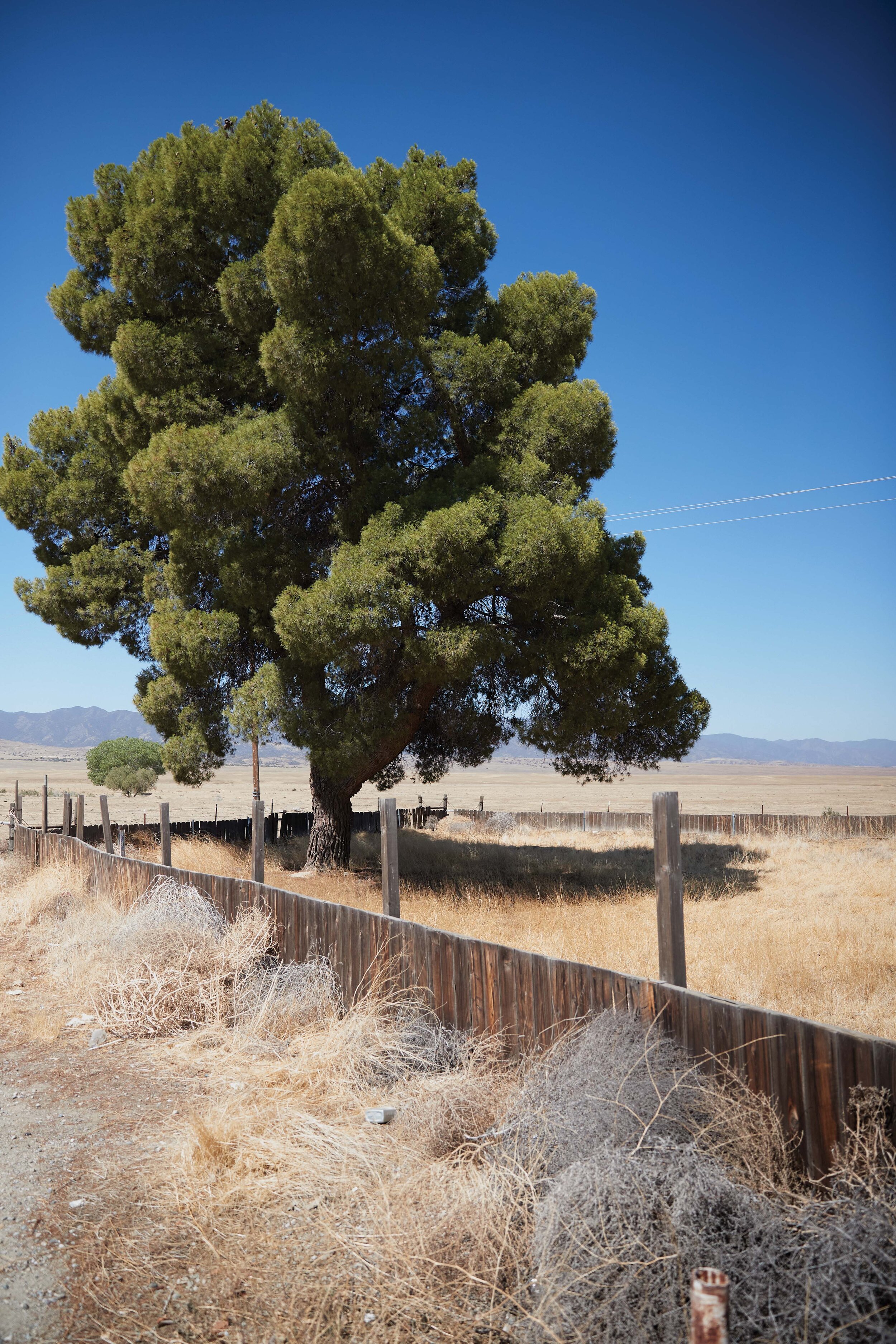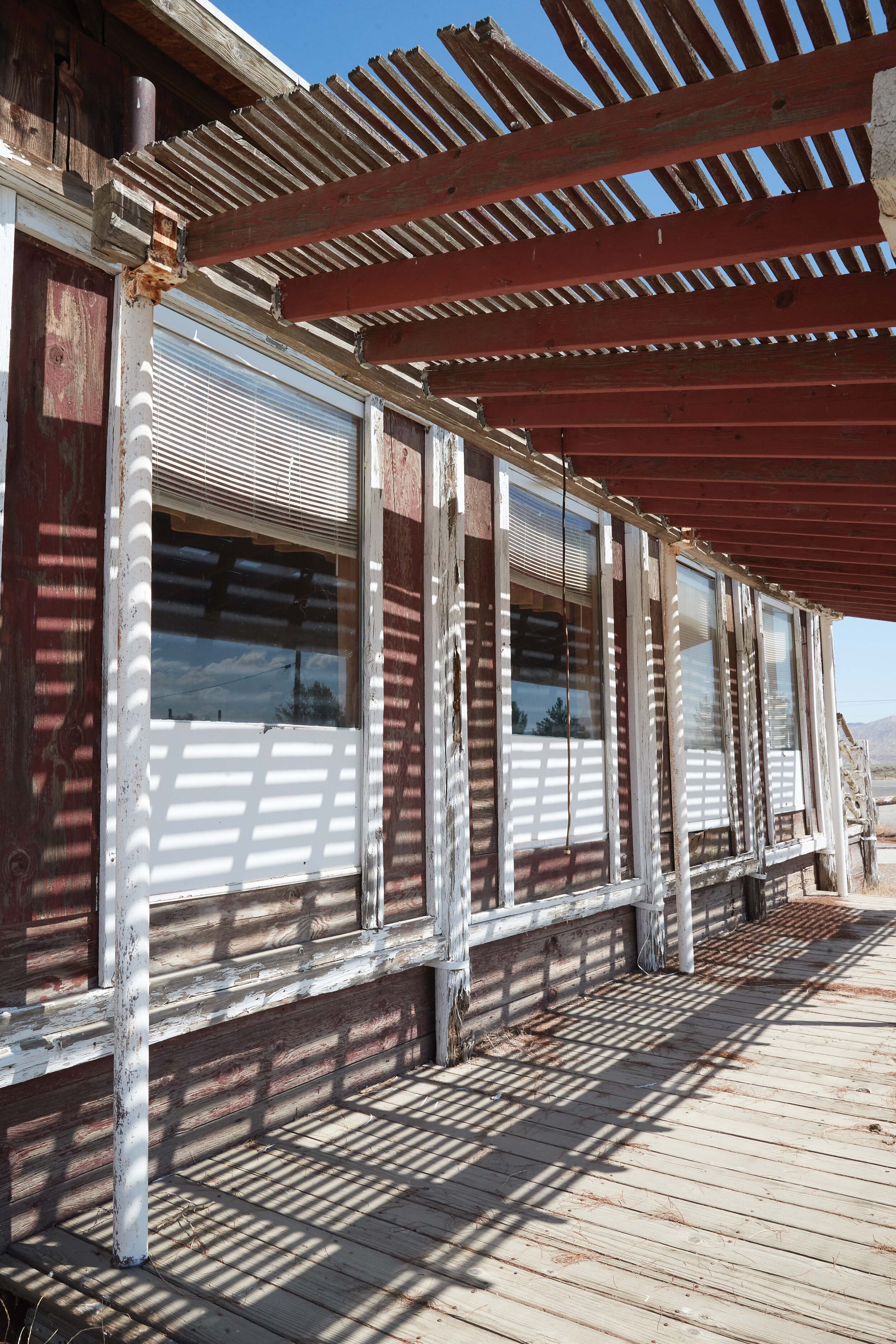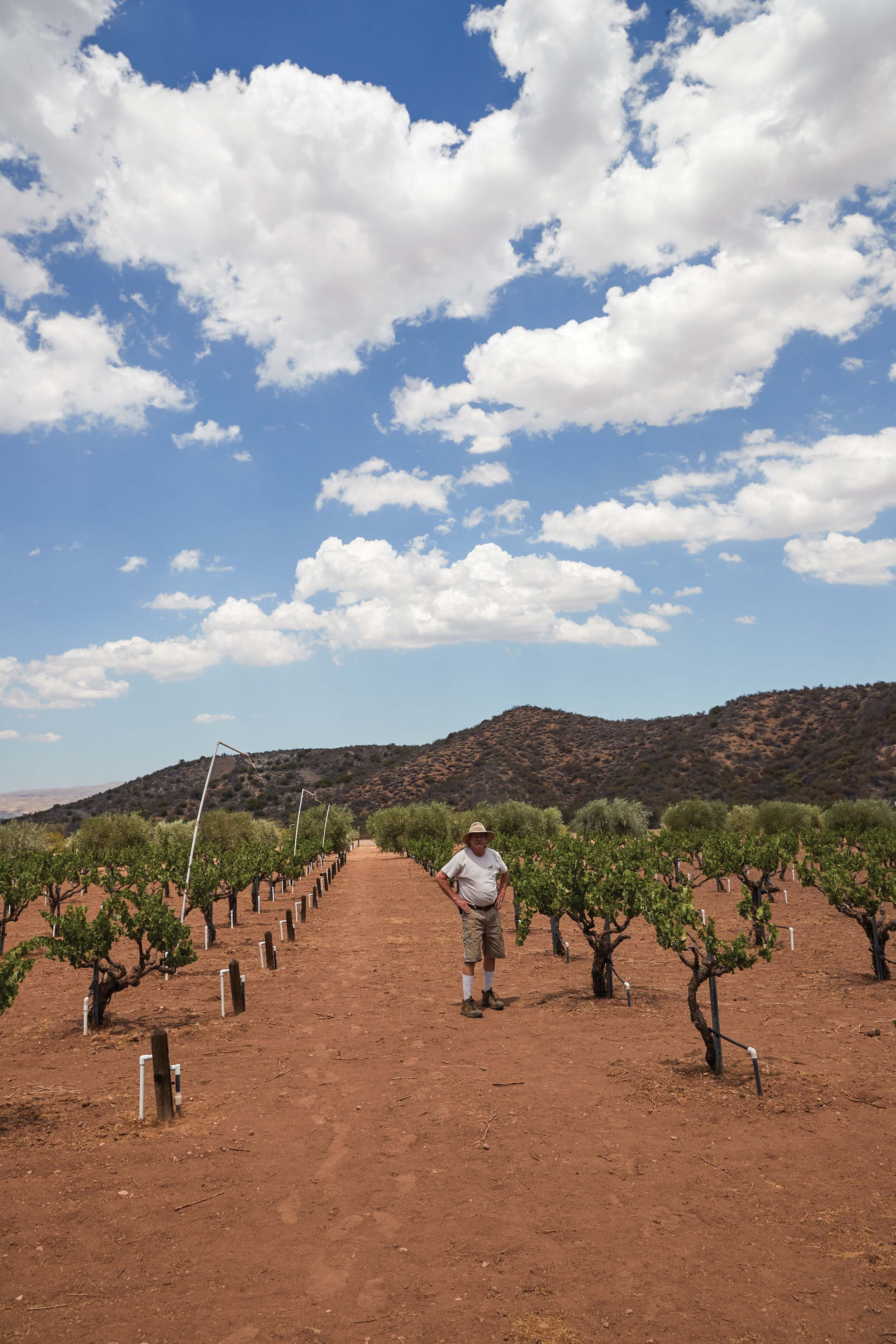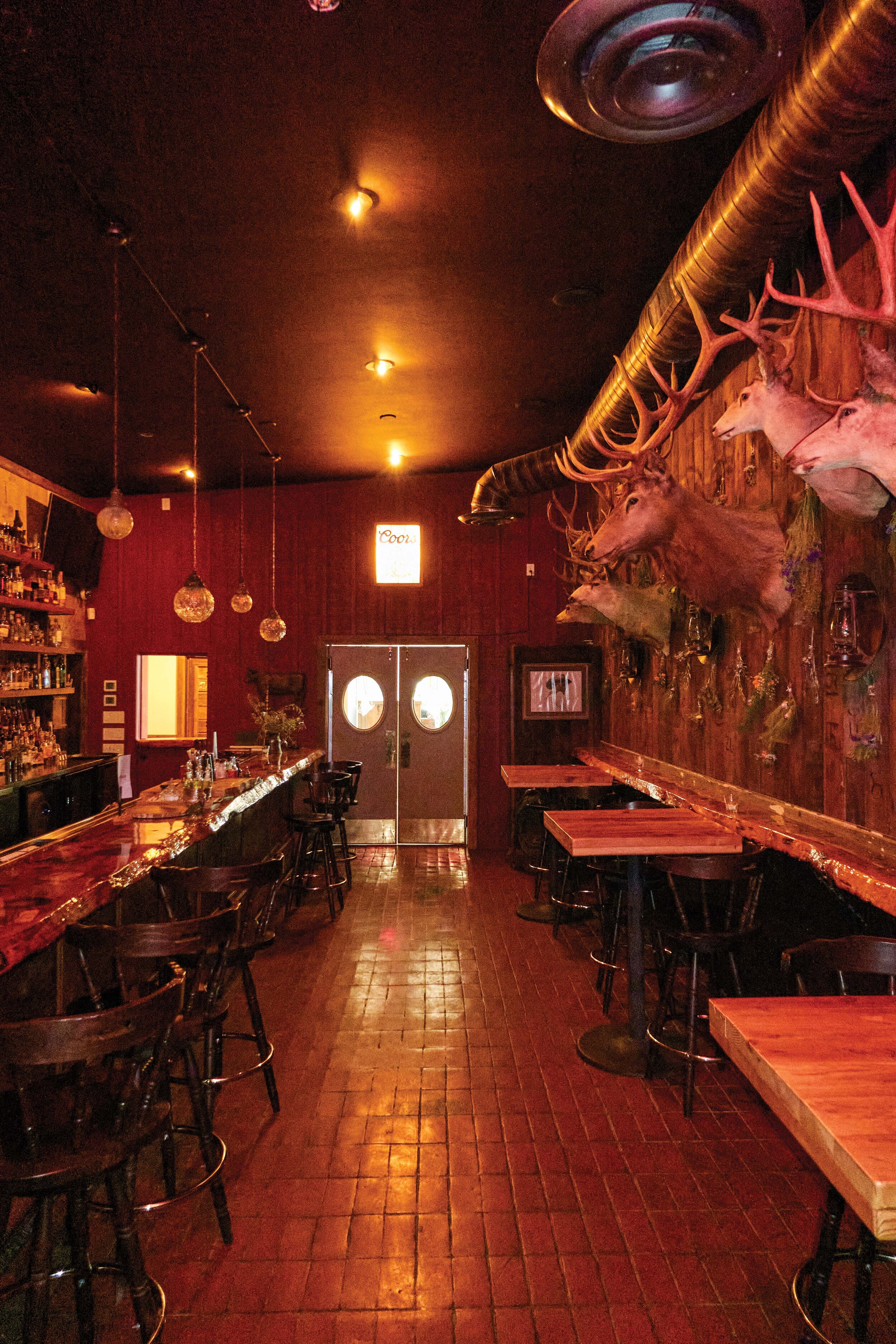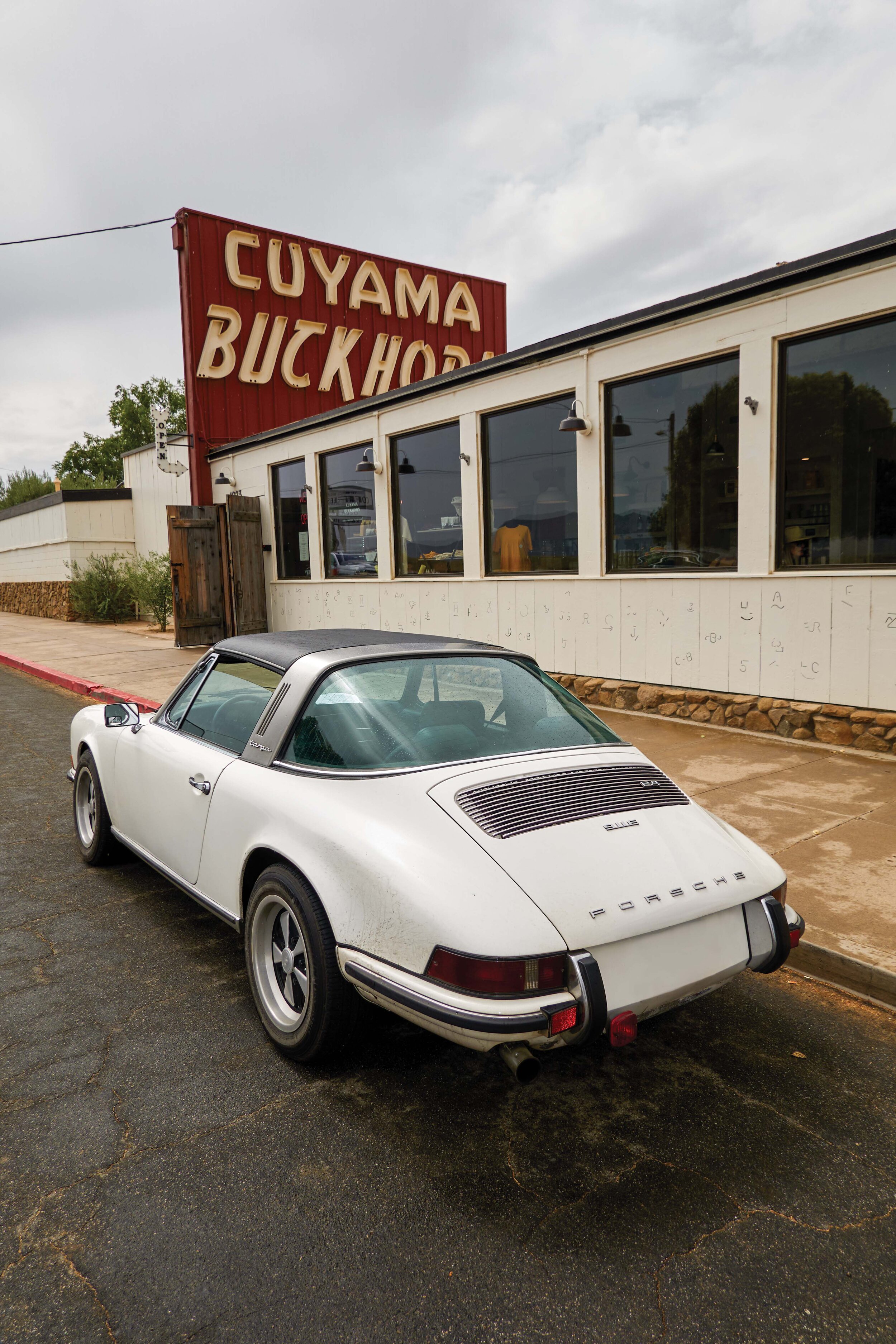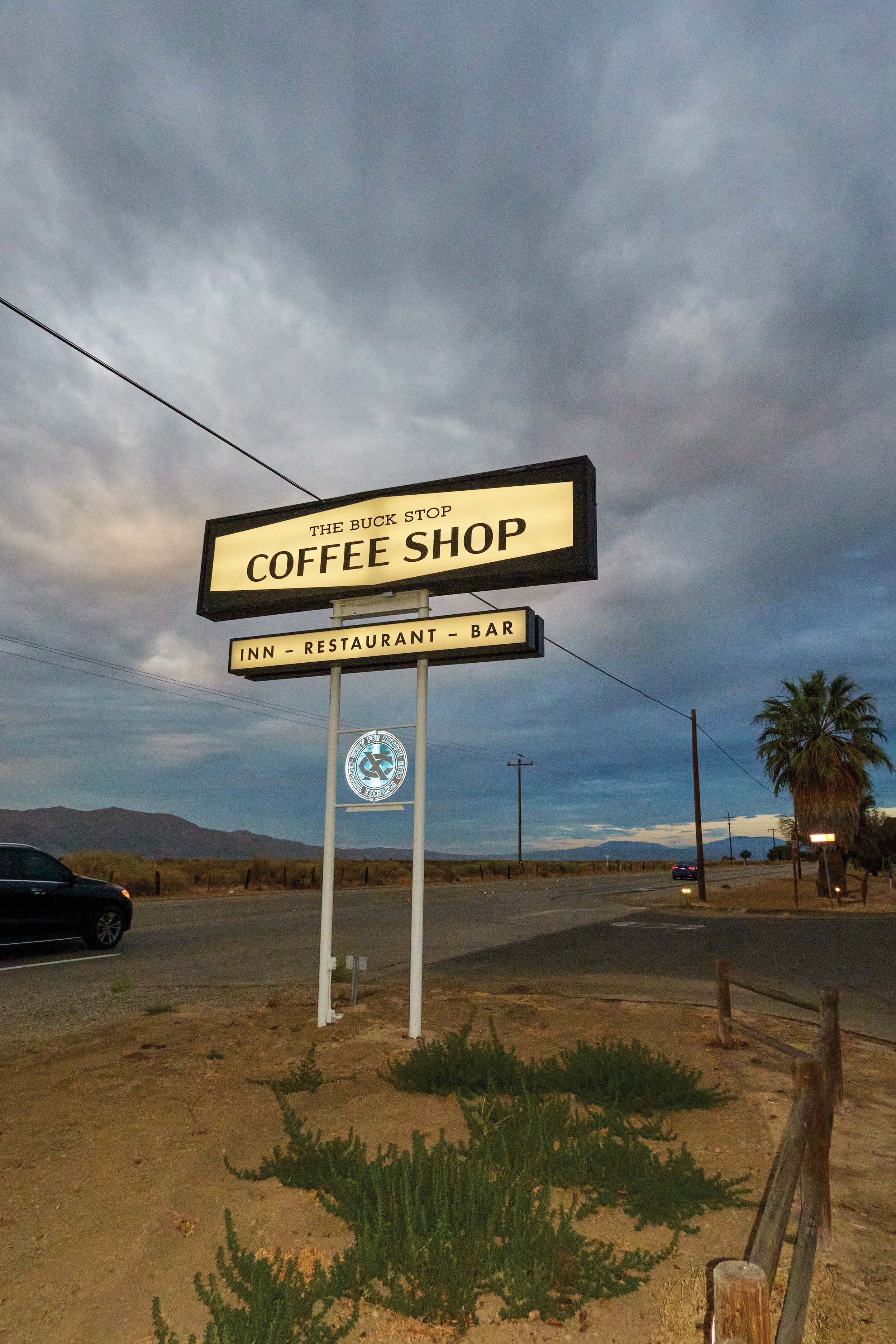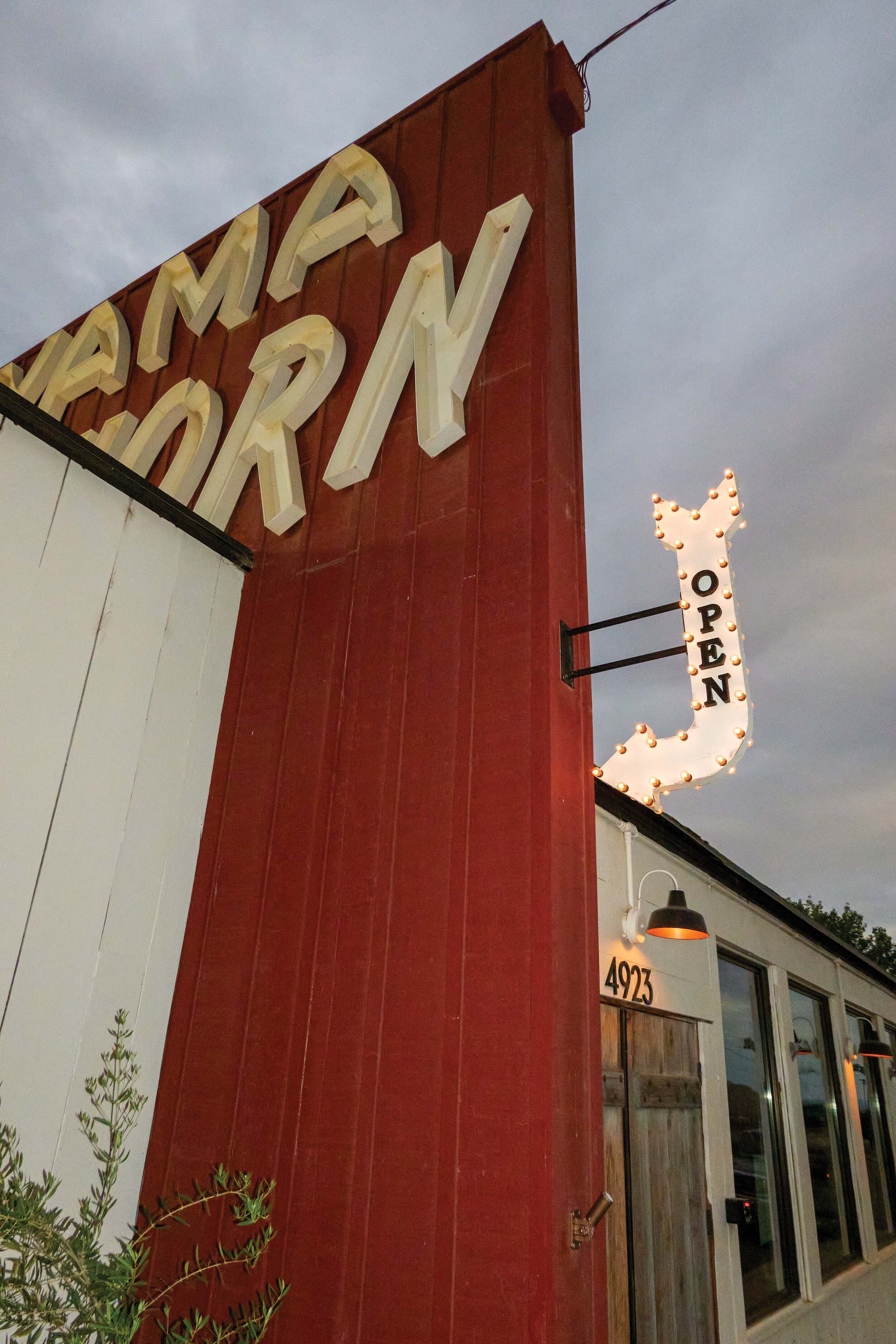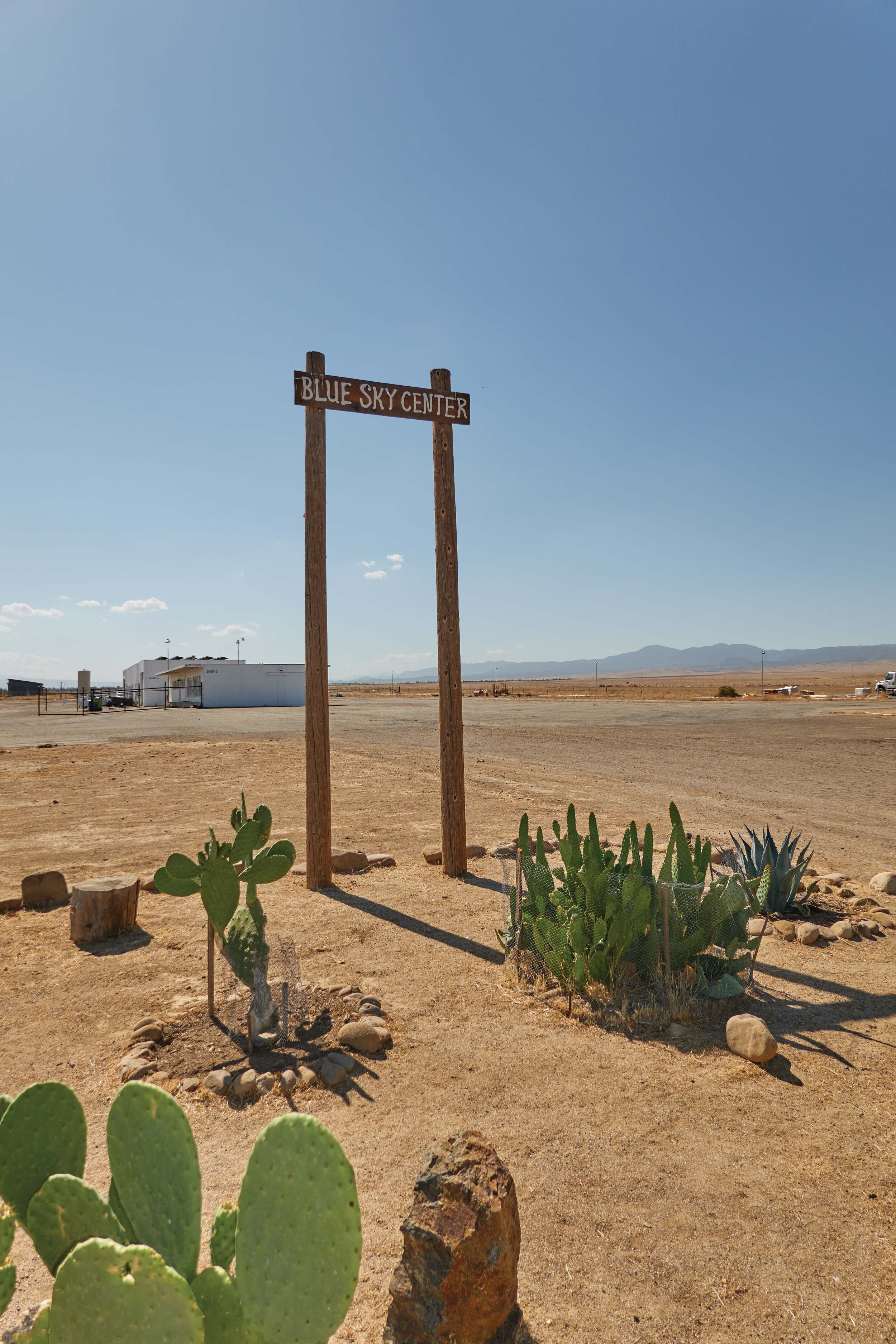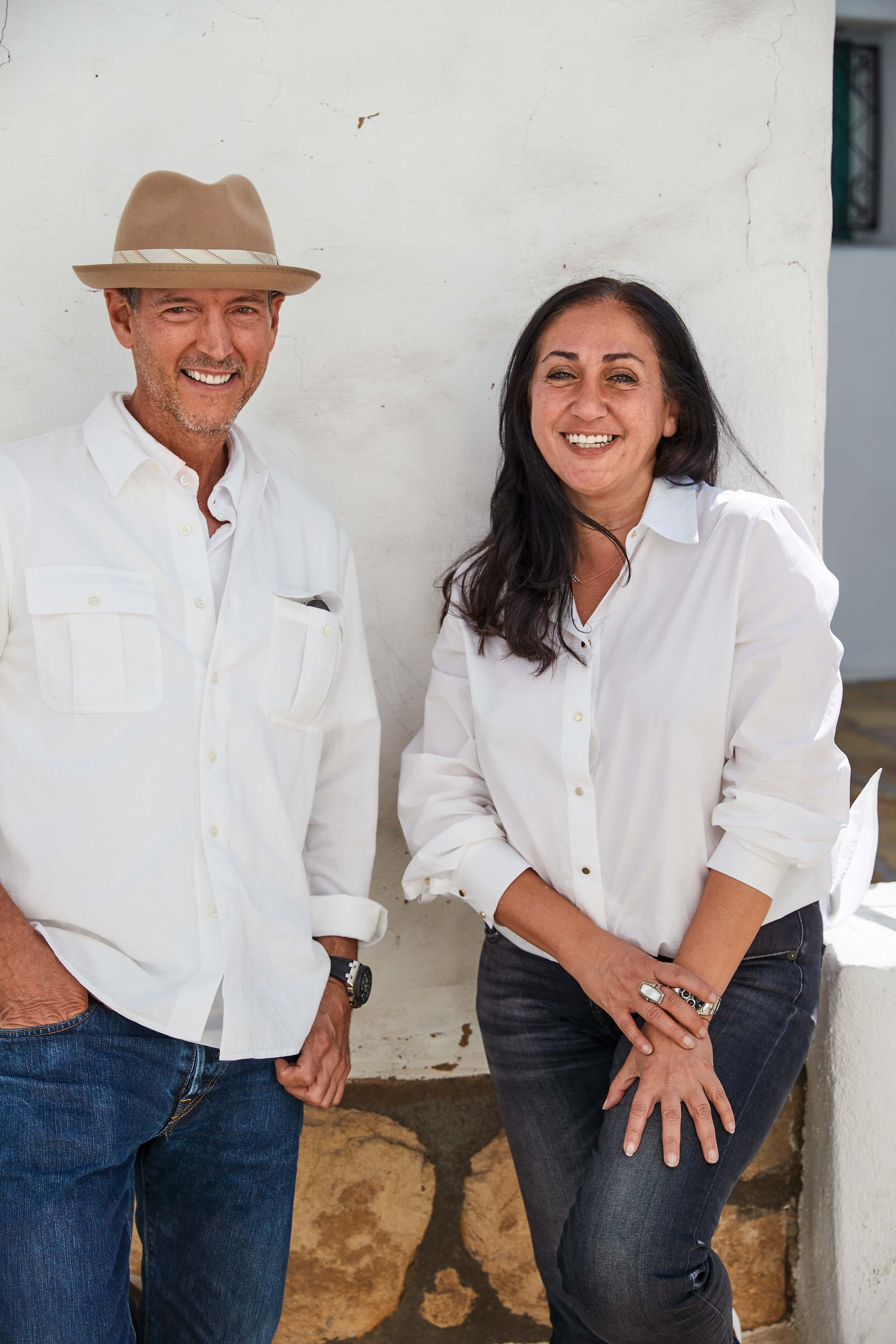Crossroads
The high desert heats up with the reimagining of NEW CUYAMA
Written by Katherine Stewart | Photographs by Dewey Nicks
Crossroads are fertile places for the imagination, where the best from a variety of distinct worlds collide with misfits from each. New Cuyama sits at the juncture of four of California’s most charismatic counties—San Luis Obispo, Kern, Santa Barbara, and Ventura—and from that unique and rather strange location, this high-desert hamlet seems to be in the process of mixing and matching new forms of California living. Even the landscape here has a bit of everything: dusty plains and grasslands, rolling hills and oak trees, all yielding to pines and mountain slopes in the shadows of the Sierra Madre.
Many of the loose ends at this unusual vortex in the Golden State gather around the bar at Cuyama Buckhorn.
Originally built in 1952, the Buckhorn has served as a roadside resort, piano bar, and community meeting point over the years. In 2018 Jeff Vance, the founder of a West Hollywood–based design-build firm, iDGroup, and Ferial Sadeghian, who is a partner in the firm, acquired the property and opened a new chapter in the New Cuyama story.
For Vance and Sadeghian, the Buckhorn represented a chance not just to combine their collective passions for architecture, restoration, hospitality, and great food but also to participate in a form of community building. Under their guidance, the 21-room property has been transformed into a place where low-key luxury meets midcentury aesthetics and cowboy cool.
Which is not to say that the Buckhorn Bar has lost touch with the old gang. On the wooden surfaces of the bar, you can trace the charred brands of local ranchers, and you can find some of those same ranchers enjoying a house-made margarita or a locally produced vintage. Among the regulars is Emery Johnston, a third-generation rancher whose great-grandfather arrived in the county by horse in the 1860s. It was Johnston’s grandfather who established the family ranch on the edge of the Los Padres National Forest in 1914; the rodeos that Johnston’s family hosted remain the stuff of legend.
Next to the entrance to the saloon, you’ll find a portrait of Johnston’s father, Lamar. Lamar was also known for having shot the nine bucks and one elk whose taxidermy mounts grace the walls of the bar. Over at the “Lamar Room,” as the hotel lobby is called, “Bob,” a stuffed brown bear that cowboys used to wrestle, stands like a watchman over the past.
Some of the cowboys here are renowned for their way with words. If you know anything about cowboy poetry, you probably already have heard of Johnston’s longtime friend Dick Gibford. A headliner at conventions such as the National Cowboy Poetry Gathering in Elko, Nevada, Gibford has a published collection and several anthologies to his credit. Making his home in a canyon that backs up to the forest, he spends most of his days on horseback surveying back-country springs and other water sources. Catch him in the right mood at the Buckhorn, and he just might tell you about the time he was jailed for alleged horse thieving. Or maybe he will recite an epic describing a night at the campfire with his horse and his philosophical musings about the rewards and costs of a life on the range.
In his poetry Gibford mixes inspiration from 19th-century poet Longfellow and 20th-century philosopher Krishnamurti with the realities of 21st-century life as a cowboy with a smartphone. This same blending of past and present seems to suffuse this town.
The story of Cuyama properly begins with the Yokuts and Chumash, the first settlers on this land. The name “Cuyama” comes from the Chumash word kuyam, meaning “clam” or “freshwater mollusk.” Today New Cuyama attracts artisans such as Carmen Sandoval, a jewelry designer and Chumash cultural educator who grew up on the Santa Ynez Chumash reservation. “When I’m in the zone with my creative work, I just tap into the spirit and into the ancestors,” she says, “and allow them to guide my hands and be my eyes.”
In 1843 the area changed forever when governor Manuel Micheltorena deeded 22,000 acres of land to what became Rancho Cuyama. As new ranches blossomed across the landscape, many of the prominent names of the era passed through here: Gaspar Oreña, Cesario Lataillade, José María Rojo.
“One of the things that makes this place so special is you have a cross section of people from all walks of life, every demographic you can imagine.” Ferial Sadeghian
Cuyama’s gilded age happened in the late 1940s. Prospectors struck oil, and the Richfield Oil Company (later ARCO) set up drills across the land. Productivity peaked in 1950, and ARCO built housing and facilities for its employees, planted trees, and put in an airfield. For a brief moment the town of New Cuyama, rich with black gold, was the pearl of eastern Santa Barbara County. But production dropped off over the ensuing decades, and the oilmen retreated.
In its heyday Cuyama’s semiresident celebrity was Johnny Cash. The singer had a home outside of Ojai, and rumor has it he downed a few more than he should have at the Buckhorn Bar.
The Buckhorn’s new owners have tapped in this vein of history in a wry way. On guest rooms’ bedside tables, where other hotels might place the Bible, visitors might find sociological studies of cowboy life or a book on Chumash ethnobotany. Or, best of all, Johnny Cash’s autobiography, Man in Black.
The Cuyama Buckhorn seems to be one of those rare spaces that exist as much for the locals as for guests. The key to the success of the place has been Vance and Sadeghian’s emphasis on investing in the community. The Buckhorn boasts a long list of partnerships with local businesses, from wineries and farmers to food producers and designers. Local products are featured throughout, from the offerings at the bar and restaurant to the minibar trays in the guest rooms.
Products from Cuyama Homegrown, a small-scale, environmentally sustainable family ranch led by Jean Gaillard and Meg Brown, are used throughout the property: Those include New Zealand spinach, leeks, heirloom beans, stone fruit, pickles, jams, and more.
Gaillard and Brown covered a lot of ground before settling in New Cuyama. He is from Belgium; she had pursued a master’s degree in agricultural economics; and the two lived for years in Europe and Africa before establishing their own farm in the valley. “This was not exactly my idea of retirement!” Brown says, laughing, as she shows off her apiary and henhouse bustling with chickens. A variety of water-saving innovations allows the farm to thrive even in drought conditions. “We don’t use herbicides, and we have to harvest some of our produce, such as sweet carrots, by hand. But we can provide top-quality products with a better taste,” Gaillard adds. “And the Buckhorn is incredibly supportive.”
The Buckhorn also works with Condor’s Hope ranch, an off-the-grid “dry farm,” which uses a traditional water-efficient technique for cultivating olive trees and wine grapes. Proprietors Steve Gliessman and Roberta “Robbie” Jaffe, both of whom spent their professional careers in agricultural and environmental studies, point out that dry farming forces grapevines to push their roots deep into the soil, producing a rich and concentrated flavor. “Our philosophy is to reconnect two of the most important parts of the food system: the people who grow the food and the people who eat the food,” says Gliessman. Jaffe adds, “We started Condor’s Hope Winery because we wanted to translate our philosophies about agricultural sustainability into action in real life.”
“Four men in cowboy hats engaged in earnest conversation over tri-tip sandwiches and pie; behind them, a pair of cannabis entrepreneurs in baseball caps discussed processing centers.”
Just a short stroll from the Buckhorn is the Blue Sky Center, founded in 2012 by the Zannon family, which owns the Santa Barbara Pistachio Company. Housed in the repurposed oil company headquarters, the center’s mission is to support resilience, inclusion, economic growth, and sustainability in the Cuyama Valley.
“They invested in this property to ensure that this large facility was in the hands of the community in perpetuity,” says Em Johnson, executive director of the Blue Sky Center. “They didn’t put together a plan of action for what Blue Sky was going to do. They creatively hired a whole young board of directors to come up with that. It was really a wonderful example of how a humble donor could transform nonprofits by just entrusting it to the younger generation.”
To assist food producers such as Cuyama Homegrown, Blue Sky offers assistance in navigating health and labeling requirements for products like jams and pickles. Blue Sky also works with the Cuyama Beverage Co., which makes a light bubbly mead; profits are reinvested in regenerative economic development in the Cuyama Valley. The center also supports Rock Front Ranch, which sells raw honey made from Cuyama Valley wildflowers, and Just Jujubes, whose founder, Alisha Taff, produces a dried superfruit also known as “Chinese dates.” Taff, a longtime horse trainer who is Chinese-American, notes the product’s high nutritional value—vitamin C, potassium, amino acids—and important role in traditional Chinese medicine. All these locally made products are for sale at the Buckhorn market.
Blue Sky has helped local ranchers develop horseback riding programs, and with the Desert Fellowship, it offers residencies for artists such as Noé Montes, whose photographs of the valley and its people adorn the center’s walls and those of the Buckhorn. Blue Sky also rents affordable space in the old airplane hangars to artisans like Garrett Gerstenberger of High Desert Print Company, which produces the graphic T-shirts worn by center staffers, and Alex Guerrero, who does highly specialized restoration work on “woodies,” or vintage wooden autos.
The 21-room property has been transformed into a place where low-key luxury meets midcentury aesthetics and cowboy cool.
Guerrero established his company, Warrior Wagons, after 18 years working for the late renowned restorer Doug Carr, and he rehabilitates vintage Rolls-Royces, Mercedes-Benzes, and Buicks to perfection. “Each car by itself can take five months to a year to restore,” he says. But Guerrero appreciates the sense of cohesion and support that organizations like the Blue Sky Center and the Cuyama Buckhorn have fostered. “I’ve never been in a place with such a community like this.” he says. “They are a blessing. Without them I wouldn’t have this shop.”
Some visitors to the Blue Sky Center end up staying awhile, to enjoy the five striking glamping trailers called “Shelton Huts,” designed by the Santa Barbara architect Jeff Shelton and his daughter, Mattie, which are maintained by the center and available through Airbnb and Hipcamp. And just like the locals, most of these visitors eventually find their way to the Buckhorn Bar, where you can encounter just about every lifestyle that California has to offer.
“One of the things that makes this place so special is you have a cross section of people from all walks of life, every demographic you can imagine,” Sadeghian says. Indeed, on a recent day at the Buckhorn, that cross section was evident. A bird-watching group twittered in a corner of the café. A tattooed woman with a T-shirt that read “Not Today, Colonizer” chased her toddler as she ordered coffee and pastries to go. Four men in cowboy hats engaged in earnest conversation over tri-tip sandwiches and pie; behind them, a pair of cannabis entrepreneurs in baseball caps discussed processing centers.
Meanwhile, a Tesla that screamed L.A. pulled up, and its driver unloaded a set of Vuitton luggage. Out by the pool, a couple in their sixties were engrossed in The New Yorker crossword puzzle, while a woman in a glittery bikini and cat’s-eye glasses lounged with her companion in the hot tub. In the evening local ranching couples on a date night sipped cocktails alongside an effervescent group of young bridesmaids who were here for a wedding. As dusk fell and the desert sky was illuminated with stars, guests, and locals congregated around the outdoor fire pits, chatting and laughing late into the evening. •









